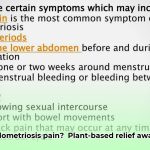Imagine the joy of welcoming a new baby instantly turning into a terrifying medical emergency. That’s the brutal reality of Amniotic Fluid Embolism (AFE), a rare but devastating complication of childbirth. It can strike suddenly, leaving families heartbroken and struggling with the aftermath. This article aims to shed light on AFE, explaining what it is, how it’s diagnosed, and what can be done to help prevent it and improve outcomes. We’ll explore the science behind it in plain language, share real-life stories to make it relatable, and empower you with the knowledge to make a difference – for yourself, your loved ones, and others facing this unpredictable threat.
AFE Awareness: Understanding Amniotic Fluid Embolism and Maternal Mortality
Amniotic fluid embolism (AFE) is a frighteningly rare but potentially deadly complication that can occur during pregnancy or childbirth and cause significant maternal mortality. Think of it as a serious medical emergency that can strike suddenly and dramatically. This article aims to shed light on this often misunderstood condition, highlighting what it is, how it’s treated, and what we can do to improve outcomes.
What is AFE, Really? Fetal cells and immune response
During labor, or even shortly after giving birth, a microscopic tear can develop in the membranes separating a mother’s bloodstream from the amniotic fluid surrounding her baby. Amniotic fluid – a complex mixture of fetal cells, vernix caseosa (the waxy or cheesy white substance found coating the skin of newborn human babies), fetal hair (lanugo), and other substances – can then enter the mother’s bloodstream. The mother’s immune system, in some instances, mistakenly identifies these fetal substances as foreign invaders, triggering an exaggerated immune response. This response can initiate a cascade of events leading to acute respiratory distress, disseminated intravascular coagulation (DIC), cardiogenic shock, and tragically, even death. AFE is a complex medical enigma, and researchers are still working to fully understand all of the underlying mechanisms involved.
Spotting the Trouble: Early Detection and Risk Factors
AFE often presents abruptly and with intense severity. Symptoms can vary significantly from patient to patient, making diagnosis challenging. There is no single definitive test for AFE. Diagnosis is typically based on clinical presentation, excluding other possible conditions, and recognizing the characteristic signs and symptoms in the context of labor or the immediate postpartum period. Early recognition is crucial, as prompt intervention can improve maternal and fetal outcomes.
Here are some of the warning signs to watch out for:
- Sudden Shortness of Breath: Rapid onset of dyspnea (difficulty breathing) or feeling as if one cannot get enough air.
- Hypotension: A precipitous drop in blood pressure.
- Cardiac Arrest: Sudden cessation of heart function. Requires immediate resuscitation efforts.
- Seizures: Uncontrolled convulsions.
- Altered Mental Status: Confusion, agitation, or loss of consciousness.
- Disseminated Intravascular Coagulation (DIC): A life-threatening condition that prevents blood from clotting normally.
- Pulmonary Edema: Fluid accumulation in the lungs.
- Fetal Distress: Changes in the fetal heart rate indicating the baby is in distress.
While AFE is unpredictable, some potential risk factors have been identified:
- Advanced Maternal Age: Women over 35 may be at slightly higher risk.
- Multiparity: Having multiple previous pregnancies.
- Tumultuous Labor: Abnormally strong or rapid contractions.
- Medical Induction of Labor: Labor induction with medications.
- Cesarean Delivery: Surgical delivery of the baby.
- Placental Abruption: Premature separation of the placenta from the uterine wall.
- Preeclampsia/Eclampsia: Pregnancy-related high blood pressure disorders.
- Polyhydramnios: Excessive amniotic fluid.
If you, or someone you know, experiences any of these symptoms during or after labor, seek immediate medical attention. Time is of the essence.
The Challenges of Diagnosis and Treatment: A Race Against Time for Medical Professionals
Diagnosing AFE is challenging due to its rarity and the non-specific nature of its symptoms. There is no single pathognomonic test. The diagnosis is primarily clinical, relying on the recognition of a constellation of symptoms in the appropriate clinical setting.
Differential diagnoses that must be considered include:
- Pulmonary Embolism
- Myocardial Infarction
- Eclampsia
- Sepsis
- Anaphylaxis
Treatment focuses on providing supportive care to stabilize the mother and address life-threatening complications. This may include:
- Cardiopulmonary Resuscitation (CPR): To maintain oxygenation and circulation.
- Oxygen Therapy and Mechanical Ventilation: To support breathing.
- Blood Transfusions: To address bleeding and DIC.
- Medications to Support Blood Pressure: Vasopressors to increase blood pressure.
- Emergency Delivery: To improve maternal and fetal outcomes.
The Importance of Research and Support: Hope for the Future and Patient Advocacy
Due to the rarity of AFE, research is challenging but critical. Research efforts are focused on:
- Identifying biomarkers: To enable earlier and more accurate diagnosis.
- Understanding the pathophysiology: To develop targeted therapies.
- Improving treatment protocols: To optimize maternal and fetal outcomes.
Organizations like the AFE Foundation provide invaluable support to families affected by AFE, offering resources, education, and a sense of community. These organizations also play a critical role in raising awareness and advocating for research funding.
Working Together: A Collective Effort to Save Lives and Promote AFE Awareness
Raising awareness about AFE requires a multifaceted approach involving healthcare providers, researchers, policymakers, and the public.
- Healthcare providers: Need to be educated about the signs and symptoms of AFE and trained in the latest management protocols.
- Researchers: Need funding and resources to conduct research to improve our understanding of AFE.
- Policymakers: Need to support research funding and implement policies to improve maternal health.
- The public: Needs to be educated about AFE and empowered to advocate for improved maternal health.
What You Can Do: Making a Difference and Supporting Maternal Health
Here’s how you can contribute to improving AFE awareness and potentially save lives:
- Educate Yourself: Familiarize yourself with the signs, symptoms, and potential risk factors associated with AFE.
- Share Information: Disseminate accurate information about AFE through social media, community events, and personal networks.
- Support Research: Donate to organizations that fund AFE research.
- Advocate for Funding: Contact your elected officials and urge them to support maternal health research.
- Share Your Story: If you or someone you know has been affected by AFE, consider sharing your experience to raise awareness and provide support to others.
- Volunteer: Offer your time and skills to organizations that support AFE awareness and research.
How to Improve Amniotic Fluid Embolism Research Funding and Improve Patient Outcomes
Key Takeaways:
- Amniotic fluid embolism (AFE) is a rare, life-threatening obstetric emergency with a high mortality rate.
- Increased research funding is crucial for improving our understanding of AFE, developing effective diagnostic tools, and establishing evidence-based treatment strategies.
- Addressing AFE requires a collaborative effort involving researchers, healthcare providers, advocacy groups, and policymakers.
- Improved patient outcomes are contingent on enhanced research, early detection, and optimized management protocols.
Amniotic fluid embolism (AFE) remains a significant cause of maternal mortality worldwide. Affecting an estimated 1 in 40,000 to 1 in 80,000 pregnancies, AFE is characterized by its sudden onset and unpredictable nature. Despite advances in obstetric care, the mortality rate associated with AFE remains unacceptably high, ranging from 20% to 40%. The complexity of AFE, coupled with its rarity, underscores the urgent need for increased research funding to improve our understanding of the condition and develop effective strategies for prevention, diagnosis, and treatment.
Understanding the Challenge: The Role of Maternal Health Research
The primary challenge in addressing AFE lies in its poorly understood pathophysiology. While it is believed that the entry of amniotic fluid and fetal debris into the maternal circulation triggers an abnormal immune response, the precise mechanisms underlying this reaction remain unclear. Further research is needed to elucidate the specific factors that contribute to the development of AFE, identify potential biomarkers for early diagnosis, and develop targeted therapies to mitigate the life-threatening complications associated with this condition.
Critical areas of research include:
- Immunologic mechanisms: Investigating the role of the maternal immune system in the pathogenesis of AFE.
- Biomarker discovery: Identifying specific biomarkers that can be used to diagnose AFE early in its course.
- Hemodynamic and respiratory dysfunction: Elucidating the mechanisms underlying the cardiovascular and respiratory complications of AFE.
- Development of targeted therapies: Developing novel therapeutic interventions to prevent or mitigate the adverse effects of AFE.
Strategies to Boost AFE Research Funding and Strengthen Patient Advocacy
Securing increased funding for AFE research requires a concerted effort involving advocacy groups, healthcare professionals, researchers, and policymakers.
Key strategies include:
- Raising awareness: Increasing public awareness of AFE and its impact on maternal health.
- Advocating for research funding: Lobbying government agencies and private
- Plant-based Diet Colitis Remission: Success Stories - December 18, 2025
- Plant Based Diet Breast Cancer: Research-Based Benefits - December 16, 2025
- Plant-Based Diet Ulcerative Colitis Remission: Proven Benefits - December 15, 2025










